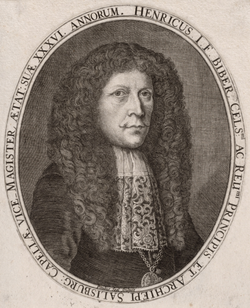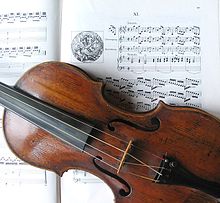This week’s theme is…Pin the Tail on the Donkey! Like many music lovers I boast an extensive and comprehensive record collection. For this week, I closed my eyes and selected 5 different albums. Here’s what I picked…

Pin the Tail on the Donkey, Day 2 – Second Sontata by Pierre Boulez

What does the word progress mean to you? In all to which it is applied, there must be assumed some kind of teleology, a fancy word for an ultimate purpose. Any action or influence which moves in the direction of that purpose is called progress, anything which moves against is called regress, and anything which does neither (moving laterally or not at all) could be called neutral. In many situations the notion of progress is self-evident. Of course we have to know what is good or desirable but, again, most of us can agree that this is self-evident most of the time. So, if you have a troubled relationship of some kind and you seek harmony, anything that seeks to mend the underlying cause of the turmoil creates progress, and anything that adds to the turmoil is regress. If you have a goal, anything that gets you closer to achieving it is progress, and anything that holds you back is regression. Concerning goals I daresay it is difficult to find a neutral action: you are either working toward it or not; even if you are doing something else that does not necessarily sabotage your goal you are still delaying its achievement, which can be seen as a kind of regression, especially considering that goals are usually time-bound. But we don’t have to get into that.
Many narratives of the human experience are described in terms of progress, as though there is an assumed good or goal at the heart of our collective striving and reflection. We speak of progress in science and technology, the unspoken assumption being that any act which strengthens our level of knowledge and predictive power of the forces of nature and the application of that knowledge in order making our lives easier and more enjoyable is good. We speak of progress in medicine, the assumption being that anything which prolongs life, repairs biological systems or reduces pain is a good thing. We speak of societal progress in which peaceful coexistence, beautification of habitat, security and prosperity are good. Sometimes the good of progress is a little more difficult to discern or causes contradictions. For example, we may speak of progress concerning tactics and weaponry of war, but our moral sense ought to cause hesitation as we are tempted to call armaments and strategies which cause greater and swifter destruction good. Still, if we grant that complete and decisive victory (which all human societies ultimately crave in battle) is good, then it makes more sense. There is one area of human experience in which progress is sometimes described, but becomes confusing when truly considered, and that area is art. Different people at different times have spoken of progress in art. But what does this mean? How does one progress in art?
In order to define progress in art, we first need to define what it means for art to be or to do good. Have you ever thought about this? What does it mean for a piece of art to be good? There are so many possible answers, all motivated by a different estimation of music’s function and goal. Typically creators of music are working from some such assumption, even if it is a subconscious one. In tracing the history of music, Western music especially, it is easy to begin to regard the development of musical style through time in a teleological manner. Indeed, I caught myself typing “progression” in that last sentence and made the conscious choice to replace it with “development”, itself not entirely free of teleological connotations :-O Western music begins with Gregorian Chant, beautiful but simple, and lacking in harmonic dimension. But is it? Maybe it was perfect for its intended context, the ultimate good. But then we imply that it was sure a good thing that organum, and later polyphony (see this post) came along so that we could get all that beautiful Baroque music and the masterpieces of Handel and Bach. But, again, maybe they were just responding to the aesthetic needs of their times, no more or less advanced than Gregorian Chant. But again we “advance” and Beethoven brings us to new expressive levels, after which Wagner deepens harmony, and finally Schoenberg dissolves it. So, would that be progression or regression? Or, does it depend on how you look at it, and what Schoenberg was responding to with his music?
Artistry is artistry, no matter when it happens, or in what style. Still, it easy to fall into the trap of overlaying teleological sense upon the history of Western music, and the history of harmonic materials can easily play into that trap, especially the way it is presented in contemporary music history curricula. According to a quick and dirty survey of music theory, harmony starts modally, becomes largely diatonic, then increasingly chromatic, finally dissolves altogether, finally becoming systematically controlled in its dissolution. This “final” step, known as total serialization, prevailed in European music during 1940s, 1950s and 1960s, the primary harmonic language of Western art music following the Second World War. Its technique, which treats musical elements like data to be rigorously ordered through mathematical processes that baffles many listeners as extremely unmusical, inevitably yields a style of music that can seem harsh, unyielding and almost entirely lacking in human sensitivity by those not initiated. One masterpiece of serialism is the Second Piano Sonata by the French composer Pierre Boulez. Though it may strike you as harsh and barbaric, the work invites comparisons to Beethoven for connoisseurs of this style:
Why did Boulez write in this way? Amazingly, it seems to be for 2 reasons which paradoxically sought to connect with and dissociate from the past. The path of harmony had become knottier and knottier, accumulating more and more chromatic inflections. In the music of Wagner and his followers harmony became so chromatic as to almost lose its tonal center. From there it was a short trip to losing it altogether, and eventually systematizing pitch choice with a technique that departed from traditional tonal grammar. That is part of what made Boulez and the serialists tick. But the other is that the lushness of late Romanticism, the style that directly preceded serialism, came to be associated with the horrors of European totalitarianism, conscripted as it often was by the Nazi propaganda machine. Boulez and his fellow serialists sought to create a music that bore as little resemblance to the ecstasy-inducing lushness of Wagner, Strauss and their ilk as possible. If this seems ascetic, you would not be the only one to have that thought. Boulez himself seemed to view this as a teleologic progression. I wonder if it ever struck his as coincidental that tonality dissolved right in time with the ancient European social order.
Can we call this music good? Boulez was certainly a craftsman – this is difficult to deny. Again, we must ask for the objective in order to evaluate it. Is it progress? Again, that implies some kind of aim. Boulez seemed to think so given unambiguous statements he made to that effect. For him, it seemed that the history of music, and perhaps the history of Europe too, was pointing to what must have felt inevitable to him and his fellow serialists: society needed to start over, and now that tonality had finally dissolved, reaching beyond its point of culmination in the music that would come to represent the lowest depths to which a people could sink, they could pick up the pieces of the shattered tonal system and begin to make a new manner of art which could accompany the rebuilding of shattered societies and peoples. Framed in this way, the teleology becomes inordinately depressing, and Boulez’ artistic outlook paradoxically less so. Still, it is difficult to escape thinking this way as we trace the music of Europe from its origins to its ultimate “destination”, wherever that may be.
—
Would you like Aaron of Smart and Soulful Music to provide customized program notes especially for your next performance? Super! Just click here to get started.
Want to listen to the entire playlist for this week and other weeks? Check out the Smart and Soulful YouTube Channel for weekly playlists!
Do you have feedback for me? I’d love to hear it! E-mail me at smartandsoulful@gmail.com
Do you have a comment to add to the discussion? Please leave one below and share your voice!
Subscribe to Smart and Soulful on Facebook and Twitter so you never miss a post!












